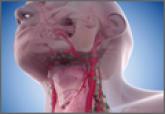Article
Oops, Wrong Bottle
- Author:
- Francis L. Counselman, MD
Article
Malpractice Counsel: Diverticulitis
- Author:
- Francis L. Counselman, MD
A 44-year-old woman presented to the ED complaining of crampy lower abdominal pain with nausea and vomiting...
Article

The times they are a-changin’ —Bob Dylan, 1964
- Author:
- Francis L. Counselman, MD
The beginning of a new year is always associated with changes, accompanied by new challenges and opportunities. This year is no different and, in...
Article

Malpractice Counsel: Don’t Miss Popeye
- Author:
- Francis L. Counselman, MD
A 42-year-old man presented to the ED with left arm pain secondary to an injury he sustained at work. The patient stated that he had been he...
Article

Malpractice Counsel: A Pain in the…Scrotum
- Author:
- Francis L. Counselman, MD
Commentary on a case involving a 52-year-old man with right scrotal pain and swelling.
Article

Malpractice Counsel: Never Too Young to Have a Heart Attack
- Author:
- Francis L. Counselman, MD
A 21-year-old woman presented to the ED for evaluation of severe chest pain radiating to her left arm, and associated shortness of breath, nausea...
Article
Malpractice Counsel: Missed Eye Injury: The Importance of the Visual Examination
- Author:
- Francis L. Counselman, MD
A 61-year-old woman presented to the ED for evaluation of left-side facial pain following a fall.
Article

Malpractice Counsel: The Challenges of Cardioversion
- Author:
- Francis L. Counselman, MD
Article

Malpractice Counsel: Pain in the Back, Pain in the Butt(ocks)
- Author:
- Francis L. Counselman, MD
Article

Malpractice Counsel: Acute Pulmonary Embolism Masquerading as Acute Coronary Syndrome
- Author:
- Francis L. Counselman, MD
- Associate Editor In Chief
A 37-year-old woman presented to the ED with a 90-minute history of chest tightness and shortness of breath. She admitted to feeling anxious but...
Article

An Unusual Cause of Syncope With T-Wave Abnormalities
- Author:
- Michael J. Bono, MD
- Francis L. Counselman, MD
Article

Malpractice Counsel: Retained foreign body, ruptured esophagus
- Author:
- Francis L. Counselman, MD
- Associate Editor In Chief
Article

A Spontaneous Internal Carotid Artery Dissection Presenting With Headache and Miosis
- Author:
- Sandra Deane, MD
- Michael A. Gil, PA-C
- Francis L. Counselman, MD
Article

Malpractice Counsel: Too much medication, hot red knee
- Author:
- Francis L. Counselman, MD
- Associate Editor In Chief
Article

What’s Hot and What’s Not in Our National Organizations: An Emergency Medicine Panel, Part 1
- Author:
- Kevin G. Rodgers, MD
- Victoria Weston, MD
- Francis L. Counselman, MD
